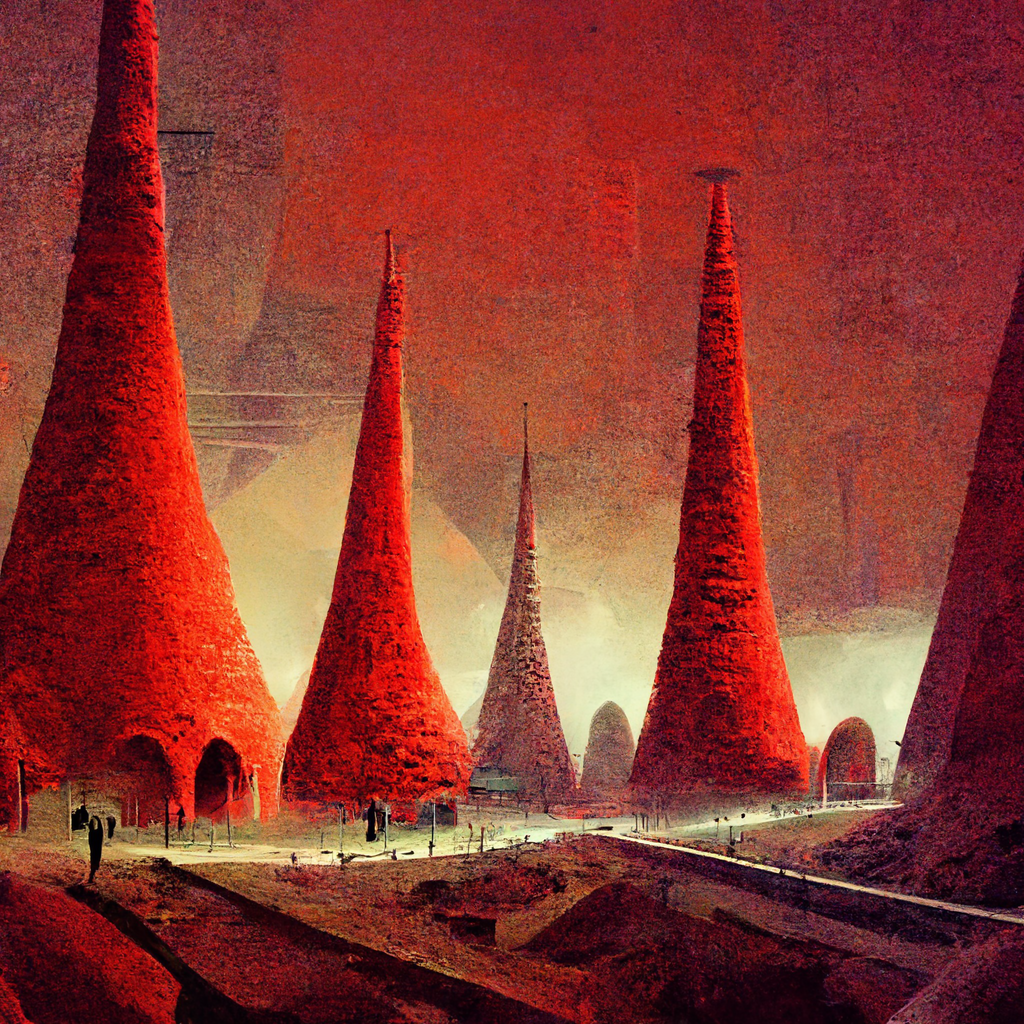THE PEOPLE OF THE PIT (5)
By:
August 28, 2022

HiLoBooks is pleased to serialize A. Merritt’s 1918 proto-sf story “The People of the Pit” for HILOBROW’s readers. Merritt’s yarn — an early example of “weird” fiction, which appeared in All-Story Weekly — destabilizes Enlightenment assumptions about the knowability of the universe, suggesting there are worlds here on Earth that lie beyond our understanding.
ALL INSTALLMENTS: 1 | 2 | 3 | 4 | 5 | 6 | 7 | 8 | 9.
“At regular intervals I had passed the mouths of small caves. There would be two thousand steps and then an opening, two thousand more steps and an opening — and so on and on. Late that afternoon I stopped before one of these clefts. I suppose I had gone then three miles down the pit, although the angles were such that I had walked, in all, fully ten miles. I examined the entrance. On each side were carved the figures of the great portal above, only now they were standing face forward, the arms outstretched as though to hold something back from the outer depths. Their faces were covered with veils. There were no hideous shapes behind them. I went inside. The fissure ran back for twenty yards like a burrow. It was dry and perfectly light. Outside I could see the blue haze rising upward like a column, its edges clearly marked. I felt an extraordinary sense of security, although I had not been conscious of any fear. I felt that the figures at the entrance were guardians — but against what?
“The blue haze thickened and grew faintly luminescent. I fancied that it was dusk above. I ate and drank a little and slept. When I awoke the blue had lightened again, and I fancied it was dawn above. I went on. I forgot the gulf yawning at my side. I felt no fatigue and little hunger or thirst, although I had drunk and eaten sparingly. That night I spent within another of the caves, and at dawn I descended again.
“It was late that day when I first saw the city — .”
He was silent for a time.
“The city,” he said at last, “there is a city, you know. But not such a city as you have ever seen — nor any other man who has lived to tell of it. The pit, I think, is shaped like a bottle; the opening before the five peaks is the neck. But how wide the bottom is I do not know — thousands of miles maybe. I had begun to catch little glints of light far down in the blue. Then I saw the tops of — trees, I suppose they are. But not our kind of trees — unpleasant, snaky kind of trees. They reared themselves on high thin trunks and their tops were nests of thick tendrils with ugly little leaves like arrow heads. The trees were red, a vivid angry red. Here and there I glimpsed spots of shining yellow. I knew these were water because I could see things breaking through their surface — or at least I could see the splash and ripple, but what it was that disturbed them I never saw.
“Straight beneath me was the — city. I looked down upon mile after mile of closely packed cylinders. They lay upon their sides in pyramids of three, of five — of dozens — piled upon each other. It is hard to make you see what that city is like — look, suppose you have water pipes of a certain length and first you lay three of them side by side and on top of them you place two and on these two one; or suppose you take five for a foundation and place on these four and then three, then two and then one. Do you see? That was the way they looked. But they were topped by towers, by minarets, by flares, by fans, and twisted monstrosities. They gleamed as though coated with pale rose flame. Beside them the venomous red trees raised themselves like the heads of hydras guarding nests of gigantic, jeweled and sleeping worms!
“A few feet beneath me the stairway jutted out into a Titanic arch, unearthly as the span that bridges Hell and leads to Asgard. It curved out and down straight through the top of the highest pile of carven cylinders and then it vanished through it. It was appalling — it was demonic — ”
The crawling man stopped. His eyes rolled up into his head. He trembled and his arms and legs began their horrible crawling movement. From his lips came a whispering. It was an echo of the high murmuring we had heard the night he came to us. I put my hands over his eyes. He quieted.
“The Things Accursed!” he said. “The People of the Pit! Did I whisper? Yes — but they can’t get me now — they can’t!”
RADIUM AGE PROTO-SF: “Radium Age” is Josh Glenn’s name for the nascent sf genre’s c. 1900–1935 era, a period which saw the discovery of radioactivity, i.e., the revelation that matter itself is constantly in movement — a fitting metaphor for the first decades of the 20th century, during which old scientific, religious, political, and social certainties were shattered. More info here.
SERIALIZED BY HILOBOOKS: James Parker’s Cocky the Fox | Annalee Newitz’s “The Great Oxygen Race” | Matthew Battles’s “Imago” | & many more original and reissued novels and stories.
